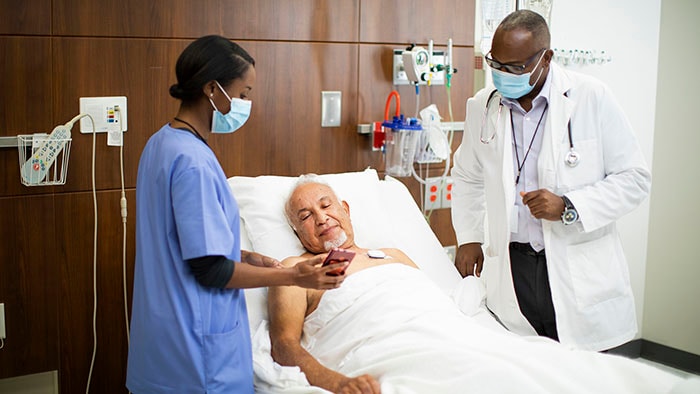Dr. Wadhwa: That's very interesting. I agree that longer follow-up provides additional diagnostic yield. 30 days of continuous monitoring in a non-invasive Philips MCOT unit as an alternative to the use of an ILR may represent a more cost-effective diagnostic strategy.
There has been a revolution around ILRs and direct-to-consumer cardiac monitors. What can the industry do to help care providers manage the data around these devices?
Dr. Lakkireddy: ILRs have completely changed the way we treat arrhythmias. Continuous monitoring of ILR gives doctors a much better picture of the patient's lifestyle, which allows for real-time intervention in emergency situations, more informed treatment decisions and more accurate patient care. A disadvantage of both ILRs and portable consumer monitors is the deluge of data created by continuous monitoring. Since many existing processing units are not positioned to gather extensive amounts of incoming data, providers must review this patient data manually.
To reduce the data load presented by ILRs and direct-to-consumer displays, new devices should focus on useful information. Care providers want to know about events that are important and require intervention, without being constantly alerted to incoming data from patients who are not experiencing adverse symptoms. When it comes to tracking, I always say, “The more you look, the more you find, the more you find, the more you record, the more you record, the more answers you get.” If doctors don't integrate monitoring, there is less data to consider, but they may also be missing the answers needed to make a difference for the patient.
For cardiology departments and private practices installing new monitoring devices, it is common for the devices to be used with “out of the box” settings. However, to get the best results, I have found that it can be helpful to review the available resources, focusing on the specific conditions they address and indications of how these devices are used together. This packaged view allows care providers to define and optimize guardrails for the clinically relevant data that should lead to alerts. In my practice, we have a “red, yellow, green” alert system to help us determine if a patient needs immediate intervention, if they should be monitored more closely for a set amount of time, or if they don't need additional attention at that time . Having effective communication to understand the needs of the clinical care team that treats patients every day is vital to running an effective follow-up program.

